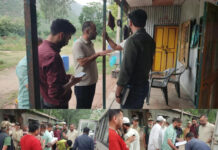In the heartlands of our nations lie the arteries of connectivity: rural roads. Yet, for far too long, these vital lifelines have languished in a state of neglect, their deteriorating condition painting a grim picture of infrastructure disparity. As we traverse the neglected byways of rural landscapes, it becomes abundantly clear that urgent action is needed to address the dilapidated state of rural roads. The sorry state of rural roads is not merely a matter of inconvenience; it is a pressing issue with far-reaching implications for economic development, public safety, and social equity. In rural areas, where agriculture reigns supreme and small-scale industries thrive, reliable road networks are indispensable for transporting goods, accessing markets, and fostering economic growth. Yet, the prevalence of potholes, cracks, and uneven surfaces impedes the flow of traffic, increases transportation costs, and undermines the productivity of rural communities. Moreover, the deplorable condition of rural roads poses significant risks to public safety, jeopardizing the lives and well-being of motorists, cyclists, and pedestrians alike. Accidents caused by road hazards and poor visibility are all too common, claiming lives and causing injuries that could have been prevented with proper maintenance and infrastructure upgrades. The lack of adequate signage, lighting, and road markings further exacerbates safety concerns, turning rural roads into treacherous pathways fraught with danger. Furthermore, the neglect of rural roads perpetuates socio-economic disparities, exacerbating the divide between urban and rural areas. Inadequate infrastructure hinders access to essential services such as healthcare, education, and emergency response, depriving rural residents of basic rights and opportunities. It also impedes social mobility, isolating rural communities and hindering their participation in the broader economy and society. The dilapidated condition of rural roads is not a problem without solutions; it is a call to action that demands concerted efforts from governments, policymakers, and civil society alike. Firstly, there is an urgent need for increased investment in rural infrastructure, including road rehabilitation, maintenance, and expansion projects. Governments must prioritize the allocation of funds towards improving rural road networks, recognizing them as critical enablers of economic development and social progress. Secondly, there is a need for robust planning and implementation mechanisms to ensure that rural road projects are executed efficiently and effectively. This entails conducting comprehensive assessments of road conditions, prioritizing maintenance and repair activities based on need, and employing appropriate engineering standards and technologies to enhance durability and resilience. Additionally, there must be greater transparency and accountability in the allocation and utilization of funds, with mechanisms in place to monitor progress and address any lapses or irregularities. Thirdly, there is a need for community involvement and empowerment in the maintenance and management of rural roads. Local residents, community leaders, and grassroots organizations can play a pivotal role in identifying needs, mobilizing resources, and monitoring the quality of road works. By fostering a sense of ownership and stewardship among rural communities, we can ensure the sustainability and effectiveness of road infrastructure interventions. The dilapidated condition of rural roads is a pressing issue that demands immediate attention and concerted action. It is not merely a matter of infrastructure; it is a matter of social justice, economic prosperity, and human dignity. As we navigate the bumpy terrain of rural roads, let us not lose sight of the urgent need to invest in their rehabilitation and maintenance, thereby paving the way for a brighter future for rural communities everywhere.

Dogra Herald is the media of J & K, breaking language and geographical barriers, connecting J & K to the rest of India.
0191 245 4946
info@dograherald.com
Latest articles
As I-T intensifies raids on distillery linked to Congress MP, cash haul might be ‘highest-ever’: Top Points
NEW DELHI, Dec 9Rs 250 crore and counting — intensifying its crackdown on a liquor distillery group in Odisha, the Income Tax...
Vodafone Idea, Bharti Airtel to raise mobile tariffs from next month
iamjkstarr - 0
Crisis-ridden telecom majors Bharti Airtel and Vodafone Idea have announced a raise in tariffs from next month in a bid to make their businesses...
Billawaria criticises PDD for dismal performance
iamjkstarr - 0
Baldev dev Singh Billawaria chairman Jammu Municipal Corporation (JMC) while levelling serious allegations against the Power Development Department (PDD) criticised it for its dismal performance....


























